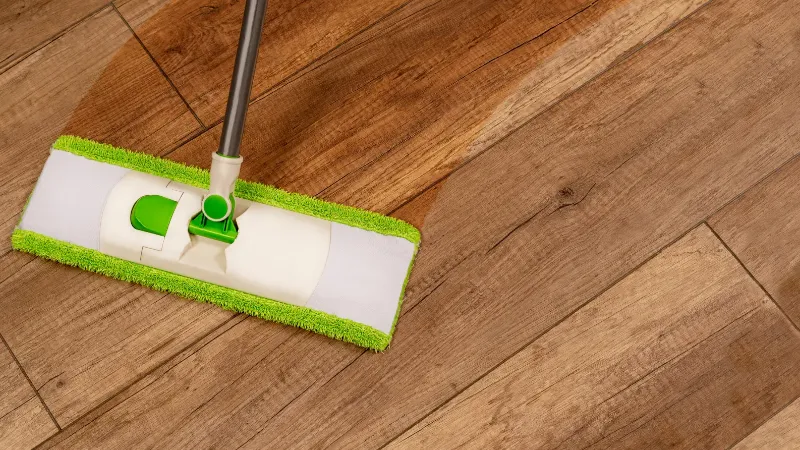Our tips on how to clean engineered hardwood floors will help you get maximum shine with minimal effort whether you’ve just installed a brand-new engineered hardwood floor or you’re hoping to spiff up a floor that’s starting to show its age.
How to clean engineered hardwood floors? Sweep or vacuum daily, use a little vinegar and water, damp mopping, deep cleaning, stay away from steam cleaners, protect high-traffic areas, and refinish to fix major damage.
Continue reading for more information.
How to Clean Engineered Hardwood Floors?
Here are the top tips to clean engineered hardwood floors:
Sweep Or Vacuum Daily
Engineered wood flooring is a gorgeous and sturdy addition to any house. But in order to stay in good shape, they need routine upkeep. Regular sweeping or vacuuming is one of the most crucial things you can do for your engineered floors. This will assist in removing dirt and dust, which over time may harm your floors. In order to get rid of pet hair and dander, it is especially crucial if you have pets to sweep or vacuum frequently. Use a soft brush attachment when vacuuming as well to avoid damaging the flooring by scratching it. Your engineered floors will last for many years if you take a little care of them. This straightforward cleaning technique is excellent for both solid and engineered floors.
Use a Little Vinegar and Water
The best way to clean engineered hardwood floors is with white vinegar and lukewarm water (1 cup per 2 gallons of water) for light daily cleaning. The natural acidity of vinegar helps to strip away dirt and contaminants while being safe for your engineered wood floor and for the environment. Just make sure to wipe up any standing water as soon as possible and use a damp mop or cloth rather than one that is completely wet. Mop with the same grain as the floorboards for best results.
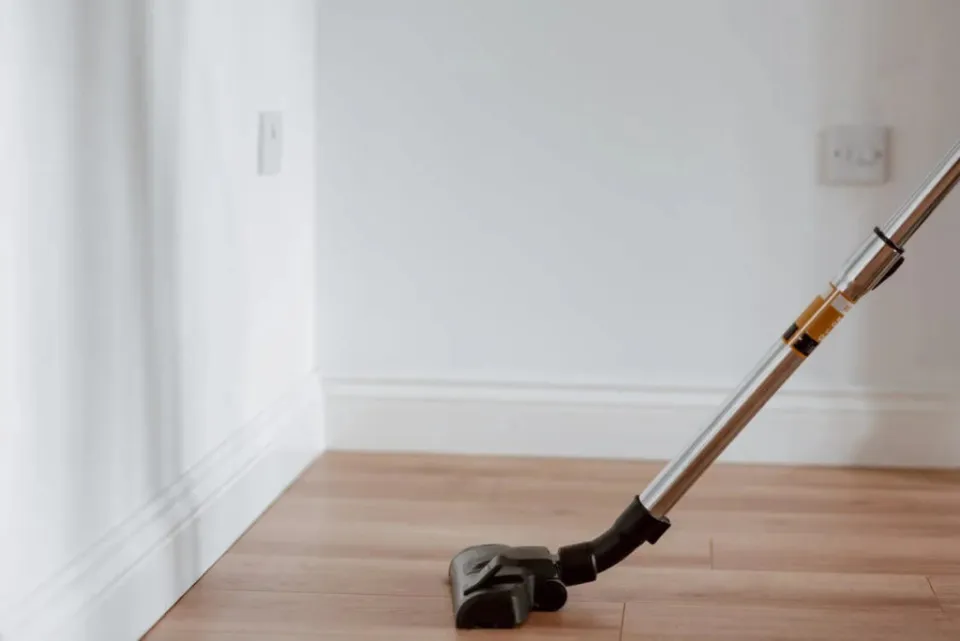
Damp Mopping
When excess water is used on wood floors, it can cause the boards to swell and eventually warp. Because of this, it’s crucial to damp mop your floors rather than completely soak them in water.
Make sure you only use enough water to dampen the mop head to prevent this, and avoid letting the mop stand in one place for an extended period of time. Small, gentle strokes should be used to mop. Before walking on the floor, dry off any puddles with a dry towel and give it time to completely dry out in the air.
As oils and waxes can accumulate over time and leave a dull finish, be sure to refrain from using any cleaners that contain these ingredients. This method is especially effective on hard-to-reach places like corners and baseboards.
Deep Cleaning
In order to keep your floors clean and maintained, deep cleaning is a necessary step. Sweeping and mopping can assist in removing surface dirt and dust, but only deep cleaning will be able to get rid of all the dirt, grime, and bacteria that can accumulate over time. Heavy cleaning is not a job to be taken lightly; it calls for the use of specialized tools and cleaning supplies (floor disinfecting wipes work wonders for killing bacteria and other germs). But it’s always worthwhile because of the outcomes. A deep-cleaned floor looks amazing and feels even better underfoot. Plus, you can rest assured knowing that your floors are free of harmful contaminants. Thus, don’t put off your laborious cleaning tasks; your floors will appreciate it.
Stay Away from Steam Cleaners
Although using a steam cleaner to clean your engineered hardwood floors may seem simple, they can actually cause more damage than good. The high temperatures and pressures generated by steam cleaners can damage the delicate finish on your floors, making them more susceptible to scratches and scuffs. Additionally, these cleaners may push dirt and debris deeper into the flooring’s cracks and crevices, making it more challenging to remove. It is best to avoid using steam cleaners on engineered floors and instead use a mild cleaning agent and soft cloth.
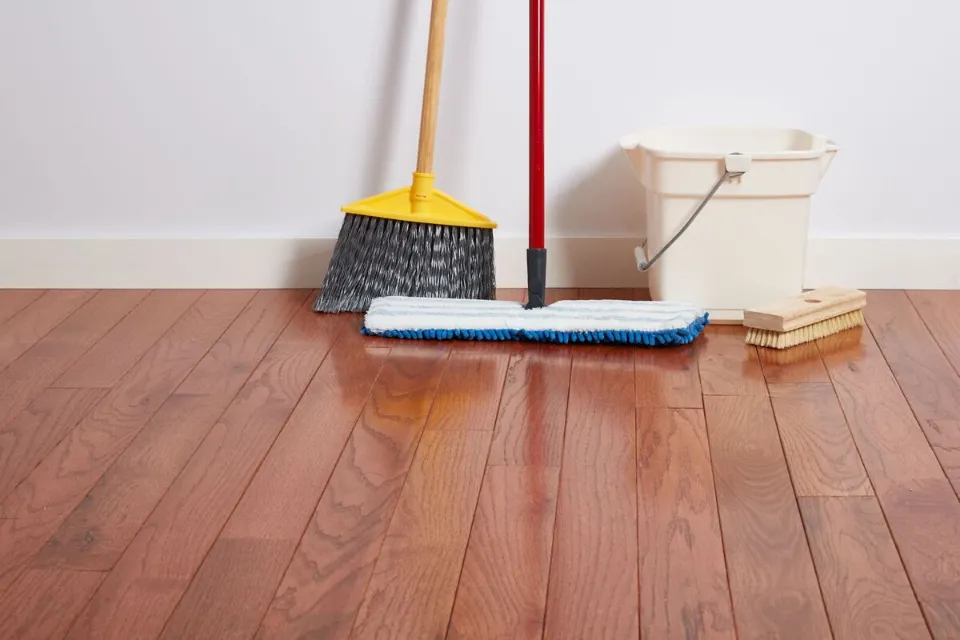
Protect High-traffic Areas
One of the easiest ways of caring for engineered hardwood floors is to use rugs, runners and welcome mats in high-traffic areas like entry points, hallways and kitchens. These coverings can help prevent the grit on the bottom of shoes from grinding into the floor and damaging the finish.
Refinish to Fix Major Damage
A floor can occasionally sustain damage even when cleaning procedures and coverings are used. You may need to sand and refinish your engineered floor to restore its beauty if someone accidentally dragged a piece of furniture across the boards and scratched it. The quality and finish of your floor will determine how you should proceed. While some engineered floors use only a very thin top layer that allows it to be refinished only once, Carlisle engineered floors have a thick top layer and can be refinished as often as our solid wood floors. To avoid an uneven appearance, however, you might need to replace boards depending on the floor and the finish. This is why we recommend saving some “attic stock” from your initial installation that you can use to replace damaged boards.
How Not to Clean Your Engineered Wood Floors?
Your flooring isn’t so fragile that you should be afraid to use it. However, when you start to learn how to clean engineered wood floors, be aware of a few limitations:
- Do not use steel wool for cleaning.
- Avoid cleaning products that have ammonia or vinegar in them.
- Use only non-melamine foam and sponges.
- Avoid the use of steam cleaners.
- Prior to mopping, sweep or vacuum the floor.
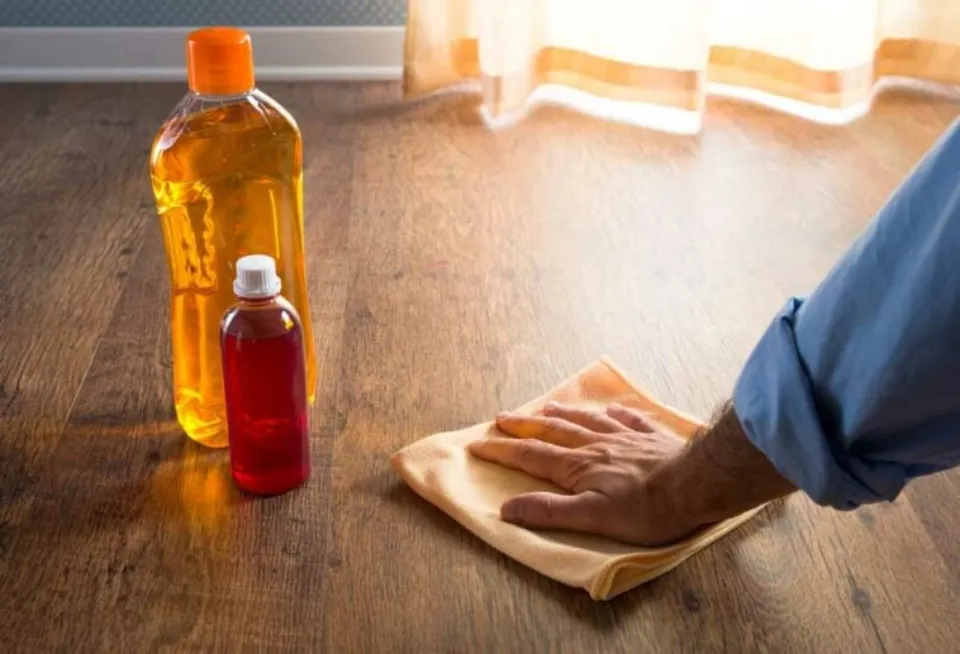
Some Valuable Tips and Tricks
A solution to your problem is frequently found in the less well-known tips. We’ll take a look at a few ideas that might be just what you need to keep your flooring looking great:
- Never be afraid to refinish or resand your floorsat least once in their lifetime. The engineered wood floors from Wood Flooring Ireland are robust and durable. Even in a home with little traffic, flooring will eventually start to look quite dull and lifeless. The best method for reviving your flooring is something we can advise you on.
- Finish your wood floors immediately after installation or sanding. Don’t wait to provide protection for your flooring before it is damaged by dirt or foot traffic.
- A hygrometeris a valuable tool for checking the humidity of a room. Even though engineered wood floors are resistant to moisture and humidity, the lamella is made of natural wood, which is more prone to deterioration. A home’s moisture level should ideally range between 8% and 11%. Relative humidity (RH) should be at 40 – 65%. To ensure that the environment is ideal for installing engineered wood flooring, our technicians will measure the humidity in your home prior to installation.
- Avoid placing electronic equipment directly on the floorbecause the heat it generates could cause damage.
- If your engineered wood flooring has lost its lustre, use a slightly damp mopto bring out its shine once again.
- Be quick to wipe up any spills.
- Be sure to mop in the direction of the wood grain.
Read about
The Advantages of Engineered Wood Flooring
We’ll help you make a decision if you’re unsure of the type of flooring you want. Engineered wood floors offer numerous benefits. To list just a few:
- Less Expanding and Contracting
Compared to solid wood floors, engineered wood floors do expand and contract, but much less so. The construction process at Wood Flooring Ireland is to install engineered wood flooring in both dry and moist areas, such as kitchens and bathrooms.
- It Looks Like the Real Thing
In the past, engineered wood floors were never confused with solid wood flooring. But thanks to industry advancements, engineered flooring now feels and looks 100% real. We build the flooring from many layers of plywood, but the top layer is a solid wood lamella of your choice, such as Oak. When we discuss how to clean engineered wood floors, the top layer is the most critical consideration.
- It Feels Like the Real Thing
Our layering process, which is intended to withstand more foot traffic than is typical, gives our engineered flooring its toughness and durability. Several layers of plywood are bonded together before the top solid wood layer is added. Do you anticipate using your floor for a century? That long of a lifespan is possible for engineered wood flooring. Examine the lamella you want to use for your top layer’s Janka score. It details the wood’s hardness factor.
- The Dust is a Good Thing
The fact that the dust and debris rest on the floor is one advantage of engineered wood flooring. Wood floors are therefore simple to clean. Instead of dealing with dust deep inside the carpet, it is preferable to deal with it on your engineered wood floor. You won’t have any trouble getting rid of ground-in dirt unless you completely disregard your flooring. You can keep your home free of excessive dust and allergens by vacuuming or sweeping, followed by washing.
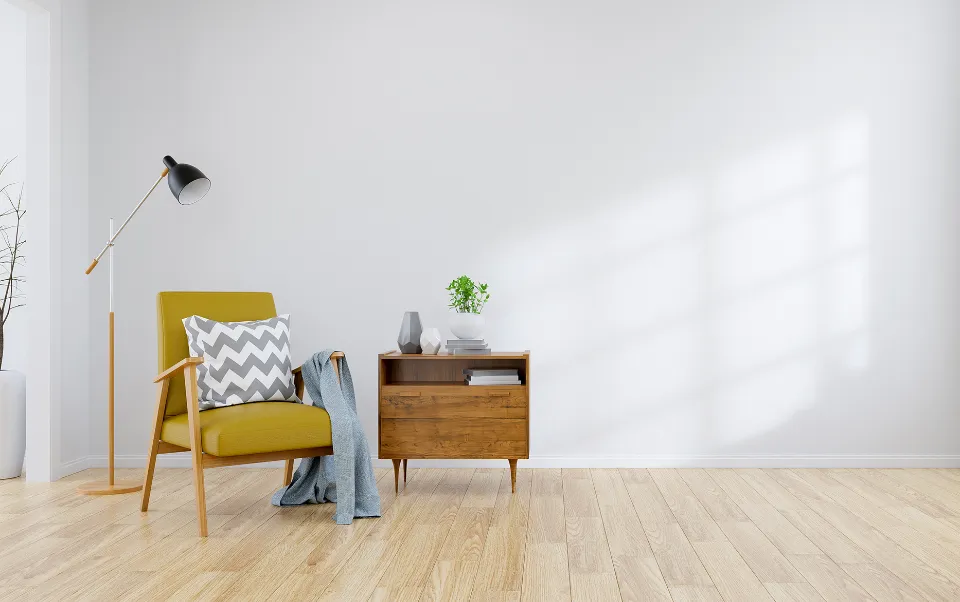
FAQs
Is It OK to Mop Engineered Hardwood Floors?
Engineered wood flooring stands up better to moisture than standard hardwood floors, but it’s not waterproof. Use a mop that is damp but not drenched. No areas should become soggy.
What is the Best Thing to Use to Clean Engineered Hardwood Floors?
For light day-to-day cleaning, the best way to clean engineered hardwood floors is with white vinegar in lukewarm water (1 cup per 2 gallons of water). While being safe for both the environment and your engineered wood floor, vinegar’s natural acidity aids in removing dirt and contaminants.
What Are the Disadvantages of Engineered Wood Flooring?
When creating their engineered hardwood flooring, some manufacturers use subpar or cheap materials. Make sure you buy from reputable manufacturers to ensure you get a long lifespan out of your new flooring. Some products made of engineered hardwood can’t be refinished.
How Do You Naturally Shine Engineered Wood Floors?
To condition and shine when done cleaning, add some vegetable or olive oil to a little undiluted white vinegar and rub into floor—kind of like adding a finishing product for shine after you shampoo!
Summary: How to Clean Engineered Hardwood Floors?
The best way to clean your engineered hardwood is with a damp mop and an appropriate floor cleaner when your floor needs a little more attention than just routine maintenance. On engineered hardwood flooring, stay away from cleaning agents with vinegar, soap, or wax. These might erode or harm the hardwood’s upper layer’s veneer surface. Never use steel wool, melamine sponges, or a steam cleaner to clean anything because these methods could also cause irreversible wear and tear.
While engineered flooring can withstand humidity better than hardwood, excess water can still seep through cracks and joins causing warping and damage to the underlayment. Avoid using completely wet mops or towels when cleaning, and never let a spill sit on the floor for too long to avoid damaging it.
If you have any questions, please leave a comment. My Prime Home tries to give you the best home improvement information. Don’t forget to share the post. Thank you for reading.
